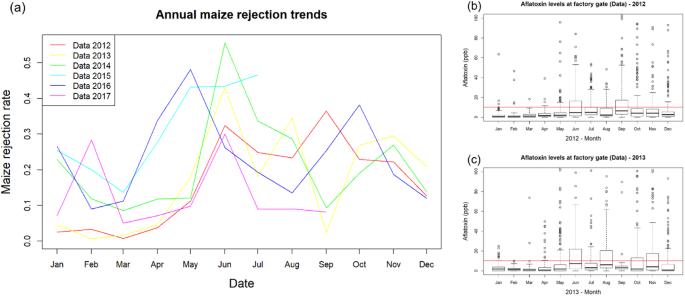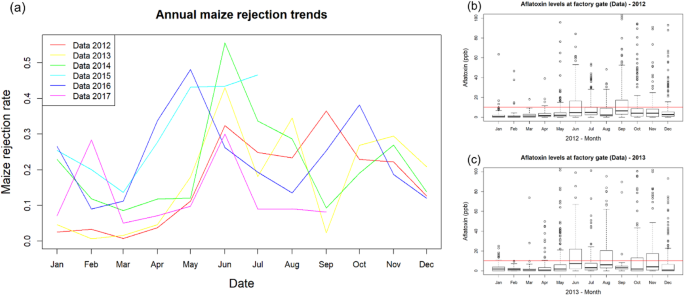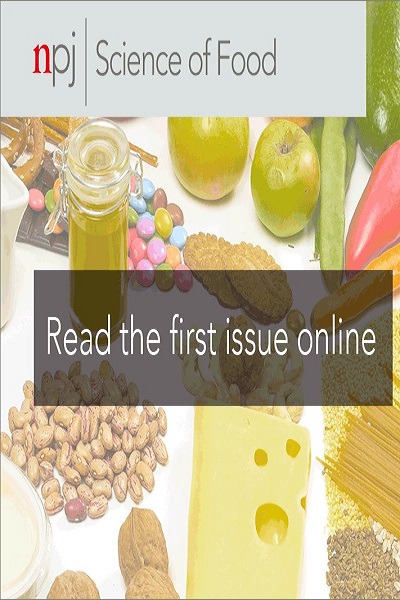玉米采前与采后黄曲霉毒素污染综合模型研究。
IF 6.3
1区 农林科学
Q1 FOOD SCIENCE & TECHNOLOGY
引用次数: 0
摘要
黄曲霉定殖玉米造成的黄曲霉毒素污染继续在食物链中对人类和牲畜的健康构成重大危害。越来越多的注意力集中在模型的发展,以预测风险和确定有效的干预策略。大多数风险预测模型都集中在阐明天气和地点变量对黄曲霉生长和黄曲霉毒素产生的收获前动态的影响。然而,真菌生长和毒素积累在收获后继续发生,特别是在储存条件受后勤和成本限制的国家。在本文中,我们在之前工作的基础上,引入并测试了一个综合气象驱动的流行病学模型,该模型涵盖了从种植到交付的整个供应链。我们使用近似贝叶斯计算来参数化模型,该模型使用了6年来每月的时间序列数据,用于从印度中南部的一个大批量玉米加工厂每天从多达三个来源地区收到的黄曲霉毒素污染水平。参数化模型的黄曲霉毒素水平时间序列成功地复制了用于拟合和验证的历史黄曲霉毒素数据集的总体概况、规模和方差。我们使用该模型来说明黄曲霉生长和黄曲霉毒素生产的动态在收获前和收获后阶段在不同的采购区域,在短期预测,以告知采购供应的决策和比较干预策略,以减少黄曲霉毒素污染的风险。本文章由计算机程序翻译,如有差异,请以英文原文为准。


An integrated model for pre- and post-harvest aflatoxin contamination in maize
Aflatoxin contamination caused by colonization of maize by Aspergillus flavus continues to pose a major human and livestock health hazard in the food chain. Increasing attention has been focused on the development of models to predict risk and to identify effective intervention strategies. Most risk prediction models have focused on elucidating weather and site variables on the pre-harvest dynamics of A. flavus growth and aflatoxin production. However fungal growth and toxin accumulation continue to occur after harvest, especially in countries where storage conditions are limited by logistical and cost constraints. In this paper, building on previous work, we introduce and test an integrated meteorology-driven epidemiological model that covers the entire supply chain from planting to delivery. We parameterise the model using approximate Bayesian computation with monthly time-series data over six years for contamination levels of aflatoxin in daily shipments received from up to three sourcing regions at a high-volume maize processing plant in South Central India. The time series for aflatoxin levels from the parameterised model successfully replicated the overall profile, scale and variance of the historical aflatoxin datasets used for fitting and validation. We use the model to illustrate the dynamics of A. flavus growth and aflatoxin production during the pre- and post-harvest phases in different sourcing regions, in short-term predictions to inform decision making about sourcing supplies and to compare intervention strategies to reduce the risks of aflatoxin contamination.
求助全文
通过发布文献求助,成功后即可免费获取论文全文。
去求助
来源期刊

NPJ Science of Food
FOOD SCIENCE & TECHNOLOGY-
CiteScore
7.50
自引率
1.60%
发文量
53
期刊介绍:
npj Science of Food is an online-only and open access journal publishes high-quality, high-impact papers related to food safety, security, integrated production, processing and packaging, the changes and interactions of food components, and the influence on health and wellness properties of food. The journal will support fundamental studies that advance the science of food beyond the classic focus on processing, thereby addressing basic inquiries around food from the public and industry. It will also support research that might result in innovation of technologies and products that are public-friendly while promoting the United Nations sustainable development goals.
 求助内容:
求助内容: 应助结果提醒方式:
应助结果提醒方式:


